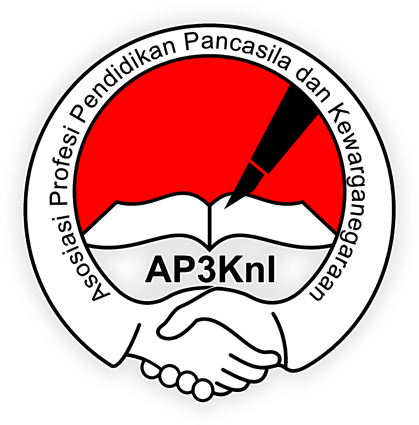EXPERT AND PRACTITIONER VALIDATION ON AUTHENTIC PROBLEM-BASED LEARNING TASKS IN PROMOTING STUDENTS’ CREATIVITY
DOI:
https://doi.org/10.33061/jgz.v10i1.5202Keywords:
authentic, problem-based learning, language learning, and creativityAbstract
Fostering students’ creativity in learning is not effortless because the average learning activity is usually less challenging. Authentic problem-based learning is a learning model that is expected to foster students' creativity in education. This study aimed to examine expert and practitioner validation on authentic problem-based learning tasks prototype in promoting student creativity. The prototype product was displayed and simulated in virtual zoom and validated by 14 learning experts and 18 practitioners/teachers. The initial data were collected through self-evaluation using a questionnaire. The results showed that the use of real experiences as a learning stimulus could foster creative solutions, which are marked by the emergence of new, unusual ideas, imaginative ideas, new creations that have an impact on the development of student creativity.References
Beghetto, R. A., & Sriraman, B. (Eds.). (2017). Creative Contradictions in Education: Cross-Disciplinary Paradoxes and Perspectives. Springer.
Bogdan, R. C., & Biklen, S. (2007). Qualitative Research for Education: An Introduction to Theories and Methods (4th ed.). Pearson.
Brand-Gruwel, S., Wopereis, I., & Vermetten, Y. (2005). Information problem solving by experts and novices: Analysis of a complex cognitive skill. Computers in Human Behavior, 21(3 SPEC. ISS.), 487–508. https://doi.org/10.1016/j.chb.2004.10.005
Dollinger, S. J., & Dollinger, S. M. C. (2009). Identity and Creativity. An International Journal of Theory and Research. https://doi.org/https://doi.org/10.1207/s1532706xid0504_2
Gaut, B. (2010). The Philosophy of Creativity. Philosophy Compass, 5(12), 1034–1046. https://doi.org/10.1111/j.1747-9991.2010.00351.x
Harrington, D. M. (2018). On the Usefulness of “Value†in the Definition of Creativity: A Commentary. Creativity Research Journal, 30(1), 118–121. https://doi.org/10.1080/10400419.2018.1411432
Kim, K. H. (2006). Is creativity unidimensional or multidimensional? Analyses of the Torrance tests of creative thinking. Creativity Research Journal, 18(3), 251–259. https://doi.org/10.1207/s15326934crj1803_2
Laur, D. (2013). Authentic Learning Experiences A Real-World Approach to Project-Based Learning. Routledge.
Martin, J. ., & Rose, D. (2008). Genre Relations: Mapping Culture. Equinox Pub.
Marzano, R. J., Brandt, R. S., Hughes, C. S., Jones, B. F., Rankin, S. C., & Suhor, C. (1988). Dimensions of Thinking: A Framework for Curriculum and Instruction. Association for Supervision and Curriculum Development.
Marzano, Robert J, Pickering, D. J., Blackburn, G. J., Brandt, R. S., Paynter, D. E., Pollock, J. E., Whisler, J. S., & Whisler, J. S. (1997). Dimensions of Learning (2nd ed.). ASCD. http://www.ascd.org
Nixon, S. (2003). (2003). Advertising Cultures.Gender, Commerce, Creativity. SAGE Publications.
Pope, R. (2005). Creativity: Theory, history, practice. In Routledge. Routledge. https://doi.org/10.4324/9780203695319
Ratzer, M. (2011). Inquiry Model Teacher’s Guide. In-School Library System. http://drmsmediacenter.weebly.com/uploads/3/3/4/7/3347316/wisecurriculumguide.pdf
Robinson, S. K. (2011). Out of Our Minds. In Out of Our Mind (2nd ed.). Capstone Publishing Ltd. http://www.wiley.com
Starko, A. J. (2017). Creativity in the Classroom. In Creativity in the Classroom. https://doi.org/10.4324/9781315391625
Sternberg, R. J., & Smith, E. E. (Eds.). (1988). The Psychology of Human Thought. Cambridge University Press.
Swann, J., Pope, R., & Carter, R. (Eds.). (2011). Creativity in language: the state of the art. Palgrave Macmillan.
Tan, A. (2015). Creativity in the Twenty-First Century Creativity, Culture, Springer. https://doi.org/10.1007/978-981-287-636-2
Wolska, M., & Dlugosz. (2015). Stimulating the Development of Creativity and Passion in Children and Teenagers in Family and School Environment - Inhibitors and Opportunities to Overcome Them. Procedia - Social and Behavioral Sciences, 174, 2905–2911. https://doi.org/10.1016/j.sbspro.2015.01.1027
World Economic Forum. (2015). New Vision for Education Unlocking the Potential of Technology. In World Economic Forum. www.weforum.org
Yunus, S. (2015). Kompetensi Menulis Kreatif. IKAPI.
Downloads
Additional Files
Published
How to Cite
Issue
Section
License
Authors who publish this journal agree to the following terms:
- Authors retain copyright and grant the journal right of first publication with the work simultaneously licensed under a Creative Commons Attribution License that allows others to share the work with an acknowledgement of the work's authorship and initial publication in this journal.
- Authors can separately make additional contractual arrangements for non-exclusive distribution published by the journal (e.g., publish it in a book), with an acknowledgement of its initial publication in this journal.
- Authors are allowed and encouraged to send their work via online (e.g., in the institutional repositories or their website) after published by the journal.
















